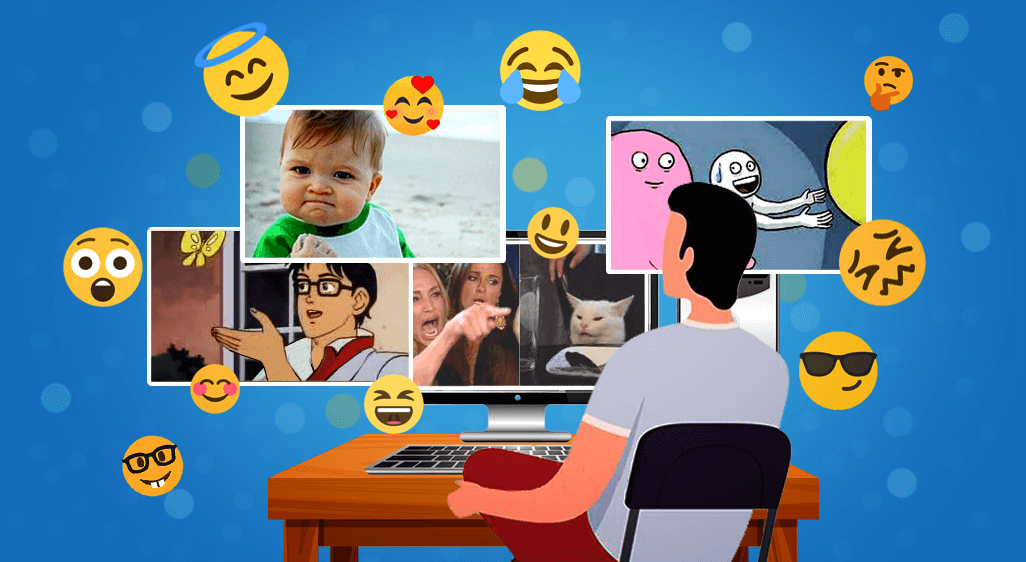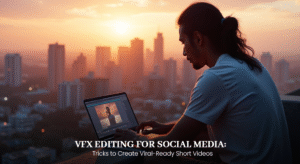
The Importance Of Using Memes In Branding
The Importance Of Using Memes In Branding
Today, social media marketing stands at the center of a business’s marketing plan. It serves as a two-way communication channel where brands interact with their target audience by creating and posting quality content that engages and builds trust, ultimately bringing the brand and the audience closer.
While brands create different types of content, memes have also found their place into the audience’s hearts and minds. Brands will often use them to entertain and engage because they are tongue-in-cheek, quirky, humour based, niche-specific inside jokes, very relatable and completely copyright-free. The word is derived from the Greek “Mimema”, which means imitation and all memes are in essence forms of imitation where an image is typically paired with text to crack a joke relevant to a current trend or event.
A meme is defined as a piece of text, an image, or a video that conveys a particular concept or idea that goes viral enough to be spread through social media platforms. It proliferates through online channels, forums, instant messaging apps and even news sites, and somewhere along the way gets changed, with its content often built upon by its sharers, so that it evolves into something else that turns out to be quite different from the original idea. At other times, it is simply posted with an altered caption to portray it in a changed form. A meme is always interpreted within a context and as such the context can have a huge impact on its meaning and relevance to the recipient.
Marketers have long realized the merits of using memes for branding. For starters, memes convey more information than text alone, or a complex idea, or state of mind or some shared understanding and far quicker. They are inexpensive to create since existing content can be turned into a new meme by adding a twist or a fun element. At the same time, marketers can be sure their audience will engage with the meme because the meme reflects the current market trends, which their consumers are already aware of.
Marketers rely on a meme to foster engagement. Essentially funny, witty, and entertaining in nature, memes resonate with the audience increasing their sense of belongingness with the brand, making them revisit the social media handles of the company, which in turn promotes wholesome growth for the brand.
The chances of a meme being shared are also far more than other pieces of content. This spreads more awareness for the brand by sharing and tagging thus helping it garner more followers. For instance, the American table service diner restaurant chain, Denny’s piggy backed on the trend of zooming in to create their “Zoom In” meme, which asked viewers to zoom in on the syrup on a cake, which then revealed a hidden message. The meme generated over 122,152 re-tweets and 172,548 likes making it the most shared meme ever.
Moreover, since memes are associated with a current trend or event they go a long way in bringing together a community interested in the trend or event. Adding a creative angle to an existing meme that is already associated with a current trend or event can thus leverage the community to draw more visibility towards the brand. For instance, BarkBox memes are all created to target and bring together a community of dog lovers.
However, in order to gain maximum benefit out of their memes, marketers must keep following considerations in mind:
The meme’s content and execution must be consistent with the brand’s tone of voice so the audience can put two and two together and relate to the brand. Marketers will often hijack popular memes forgetting to lend their brand’s unique touch. As a result, they lose out on promoting their brand campaign or message. Marketers should therefore frame memes in ways that appeal to their audience while also accurately reflecting their brand’s personality. A case in point is Gucci, who cleverly promoted the exclusivity and luxury typical of their brand through their #TWFGucci campaign where brand commissioning artists did their own take on well-known memes to feature Gucci watches.
It may be a good idea to experiment with current trends and happenings while taking care to use that trend to talk about the brand. Doing so will ensure recall for the brand whenever the audience refers to the meme. No wonder then that Seamless, an online food delivery service based in the US created an entire set of memes on the popular topic of Academy Award Nominations.
Another mistake to avoid would be not to sell. A call-to-action button should never find its way into a meme because the purpose of a meme used for branding is to promote and reflect the brand’s personality and not sell it per se.
It might also help a great deal to repost User-Generated Memes because such memes motivate more people (among the audience, and beyond) to create such content because they know it will be acknowledged and rewarded. The marketer gets to post free content without any extra effort on his part while the creator benefits from the great reach and visibility of User Generated Content, making this a win-win situation.
As smart marketers agree, their memes must speak directly to their target audience. Therefore, they will conduct research about the kind of content their audience likes, the type of TV shows and movies they watch, ways and means to introduce a sense of community through the memes they intend to create. Once they learn more about the audience’s preferred language, humour and keywords they will then take care to create memes that resonate with the audience.
Moreover, to save time, some marketers will figure out if their audience is older, more formal or conservative and not into memes at all. In such a case, other forms of content may be more suited to this kind of an audience.
Rather than reinvent the wheel, marketers might do well to look into meme libraries and do their own take on existing memes, repurposing them by adding custom captions and emojis, or playing with colours and fonts. Or if they feel up to the challenge, they might create original memes keeping popular cultural references in mind.
Another smart route to take would be to create memes that are inspired by interesting ways in which customers use the brand, which keep building social proof for the brand.
Since memes don’t have much of a shelf life and their popularity is short lived, marketers sometimes use memes as part of their strategy of Moment Marketing, which focuses on targeting the business to its consumers at the moment it matters. The whole idea in moment marketing is to latch on to trends making them work to the marketer’s advantage by introducing a brand moment that becomes relatable to customers. A meme thus fits in beautifully in the schema of Moment Marketing.
Finally, it would be unwise to turn a social media page into a meme dictionary. Excess is bad and will do more harm than good. Marketers must always create valuable content that solves a problem and builds credibility for the brand. Alternately, some marketers will open a blog page and wisely insert occasional memes on the blog.
Summing it up, memes can be an effective weapon for engagement on social media if leveraged the right way and at the right time. Our expert team is well-versed in graphics design for creating memes to get you more inbound leads and website traffic. Connect today.












